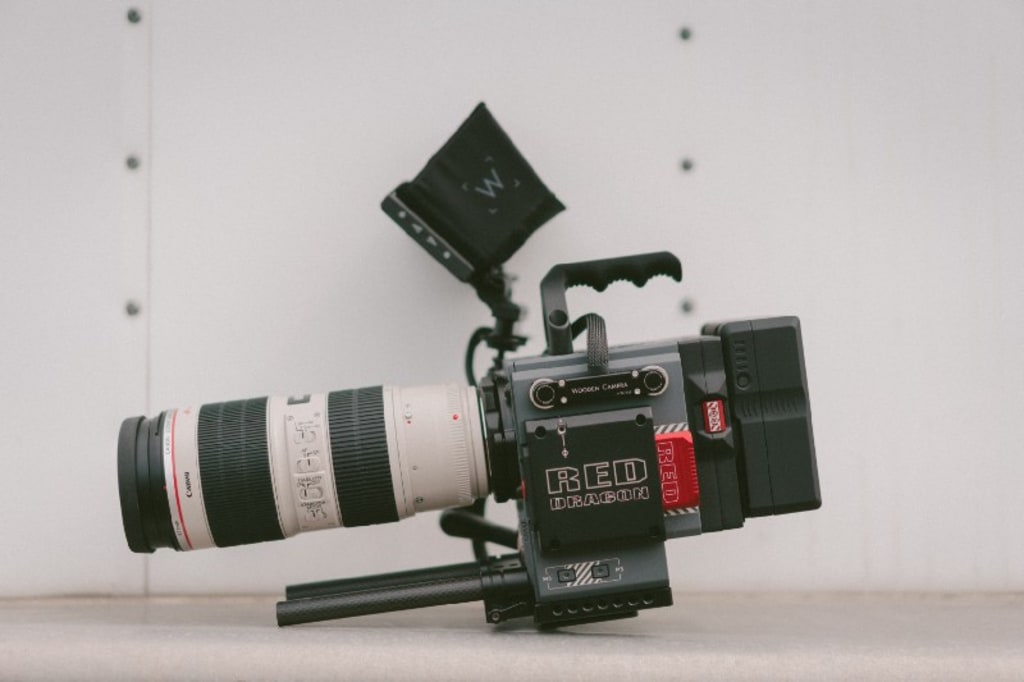How To Write Gripping Action Scenes - The Zoom Effect
Are you despairing of a fight scene or a car chase? Then these tips can help you.

Whether it's a car chase in a crime thriller, epic battles in high-fantasy or firefights in a war epic - in all cases, the tension stands and falls with the speed of the story.
Action scenes are often as challenging as erotic scenes. To make them look authentic requires advanced skills from the author. To convey the necessary intensity of the scene is often not easy.
Today I will show you how you can spice up your action scenes with the zoom technique.
Zoom in
The perspective character of a scene is the one through whose eyes we experience the narrative. His perception of the world is subjective and shaped by his very own priorities. In the course of a scene, the perspective character will, therefore, successively focus on different sections of reality and fade out others completely.
Example without zoom:
Severely injured people dragged themselves through the streets to escape the fighting. The scene was apocalyptic. Many were barely able to walk. There were horrible mutilations and screams echoed through the canyons of the houses.
Example with zoom:
Christopher saw fear, desperation, and anger in these faces, most of which were sooty, some burned, and actually, all of them injured in some way. The fugitives limped, and many had gunshot wounds. One who was screaming like he had been stabbed was missing an entire arm.
Without zooming in on a section of the apocalyptic scene, the narrator must try to reproduce the overall mood. The seriously injured are a faceless mass, and the mention of severe mutilation is not very specific. There are no clear images in the reader's mind.
With zoom, we look into the sooty and burnt faces of a group of fleeing people. Instead of focusing on all of them, the view is concentrated on a small group that the perspective character sees at the moment of the portrayal.
In this group, we zoom in on one individual - the man with the missing arm. The increasing focus on ever-smaller areas of the action makes the scene appear more vivid and immediate.
Zoom out
Sometimes it is necessary to temporarily expand the limited perspective of the perspective character to put a scene into a broader context and create a pop effect.
Example without zooming out:
Peter crawled up to the edge of the roof and looked through the binoculars into the deserted alley, ten stories down. There something was moving behind a garbage container. He sharpened the lens and discovered a little boy crouching there in fear.
Example with zoom out:
Peter crawled up to the edge of the roof and looked through his binoculars. Behind a dumpster in the deserted alley below the building, a small, frightened boy was crouching. What was he so scared of?
Peter couldn't figure it out. He put the binoculars away and stood up. He was about to shout to the boy that he shouldn't worry and come up to him when, from his new perspective, he could suddenly see what was going on in the side streets. He froze, and his heart stopped for a beat.
Masses of undead were approaching from all directions. They shuffled and hobbled, coming from the main streets, into the maze of small alleys. The road in which the boy had become entangled was already wholly surrounded. It was only a matter of minutes before the zombie hordes would reach him.
The difference is clear. Without zooming out, Peter and the reader only get a glimpse of reality. The boy's fear is visible, but the context is missing.
Only when zooming out, does it become clear what the boy is so afraid of. By getting up, Peter's perspective changes abruptly, and so does his knowledge.
A quick zoom out can cause a shock to the reader. In real life, it is not very nice to shock someone, but in a story, this is not only allowed but desired.
It is particularly useful to combine both techniques. Zooming out unfolds its effect best if you have zoomed in first.
By the way, the scene works just as well if we zoom out first and then zoom in. If Peter first discovers the zombie horde and only then the boy who is trapped by them, this doesn't seem any less shocking to the reader.
Conclusion
The zoom effect can be used for action scenes in two different ways.
We can zoom into a scene to create more intensity, and we can zoom out to give more context to a single event.
Both techniques can and should be combined in action scenes. Jumping back and forth between the two perspectives adds dynamics to the scene and offers readers what they are used to in the film because the film never uses only one camera angle throughout
About the Creator
René Junge
Thriller-author from Hamburg, Germany. Sold over 200.000 E-Books. get informed about new articles: http://bit.ly/ReneJunge






Comments
There are no comments for this story
Be the first to respond and start the conversation.